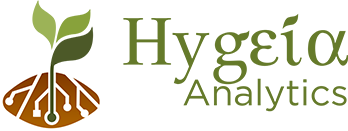
Tracking changes in pesticide use is an essential step in assessing pesticide risks and benefits. Changes in use also alter the economics of pest management, as well as the risk of triggering the emergence and spread of resistant weeds, insects, and plant pathogens.
There is no one perfect measure of “pesticide use.” The term “pesticide” encompasses all types of chemicals or natural products that target different pest organisms: weeds, insects, plant diseases, bacteria, viruses, rodents, mollusks, etc. The term “pesticide use” is typically a measurement of the weight of active pesticide ingredient applied on a given crop, across all crops, per acre, or in a geographic area. This measurement is in pounds in the US and in kilograms across most of the rest of the world. However, the weight of applied is an imperfect measure of the intensity of pesticide use, leading to the need for a set of Pesticide Use Indicators.
The development and widespread planting of genetically engineered (GE) crops has had profound impacts on pesticide use, and hence has been, and will continue to be the focus of research over many years (see Impacts of GE Crops on Pesticide Use). So too has organic farming.
Pesticide Use Data Sources
Pesticide use data provide the foundation for many types of analyses including the tracking of pest management system efficacy and resiliency, the costs and returns to pesticide use, and a variety of risk assessments.
The primary public sources of pesticide use data are:
- The USDA’s National Agricultural Statistics Service (NASS) pesticide use data by crop, chemical, and state;
- California Pesticide Use Reporting (PUR) data by crop, chemical, product, and county;
- Periodic reports issued by the Environmental Protection Agency; and
- USGS pesticide use by crop, chemical and county.
Hygeia Analytics’ (HA) Pesticide Use Database (PUDS) is the only electronic source of use data from pre-1990 surveys of pesticide use conducted by the USDA. While these historical USDA surveys are limited in scope compared to post-1990 surveys, they are reasonably complete for major field, fruit, vegetable, and grain crops. With these data, long-term, historical assessments of pesticide use trends and risks can be carried out.
Private Surveys
In addition to publicly accessible pesticide use data, a number of consulting firms have compiled proprietary pesticide use datasets. While private survey data is often very detailed and more complete than government data, accessing the data can cost hundreds of thousands of dollars per year. For this reason, HA’s work on pesticide use will rely predominantly on data collected and made available by government agencies at the state and federal level.
Pesticide Use Indicators
Measuring pesticide application amount, frequency, and area is complex and several different units and scales of measurement are needed to paint a clear picture of how pesticide use has evolved over time. We have developed a comprehensive section that details the ten different metrics utilized to analyze pesticide use, see the Pesticide Use Indicators page for more.
Pesticide Use Data System (PUDS)
The Pesticide Use Data System (PUDS) is an online system where pesticide use data going back to 1991 is available for industry, researchers, or the general public who have a desire to examine pesticide use in the United States. One of the major goals of Hygeia Analytics is to provide pesticide use data to everyone in a form that is easy to access and ready for immediate analysis. With PUDS, users have access to the tools they will need to determine trends in pesticide use over time and to evaluate the impacts of various policies and industry developments. See the PUDS Page for more information and access to the tool.
